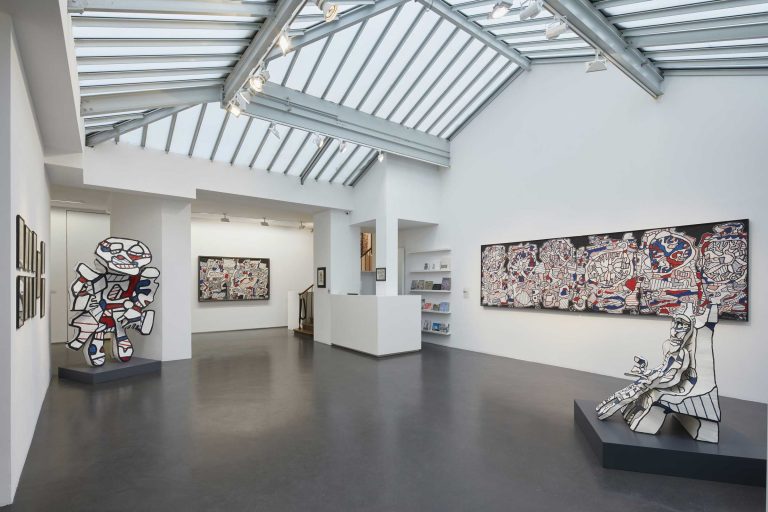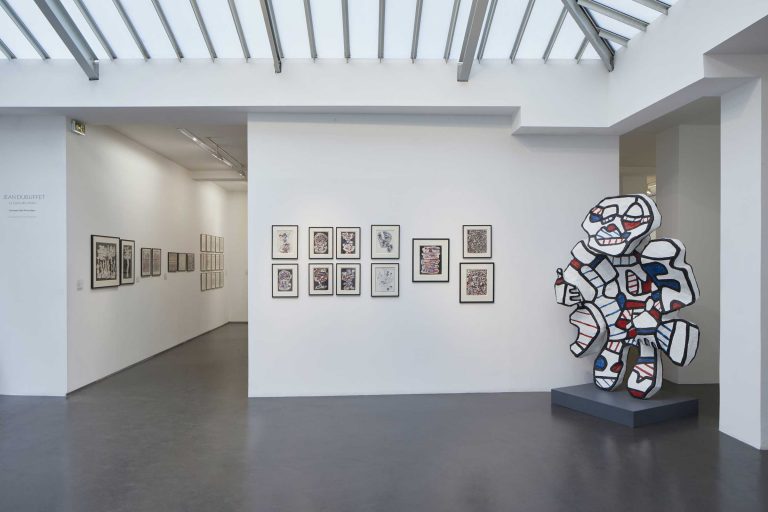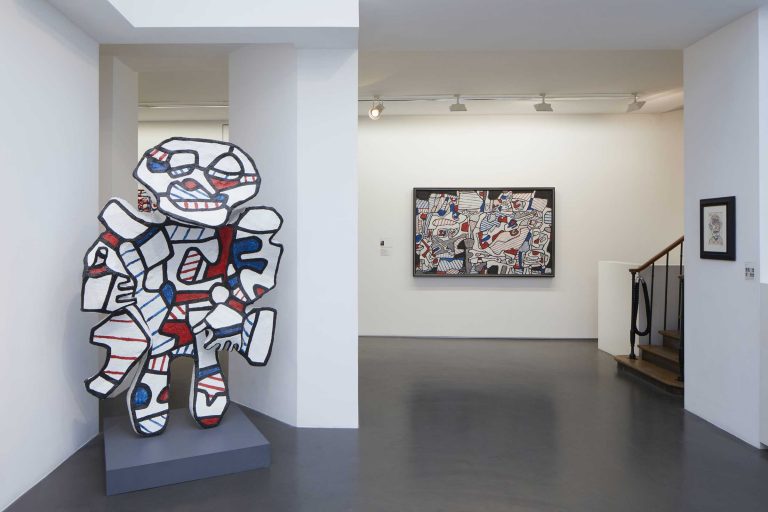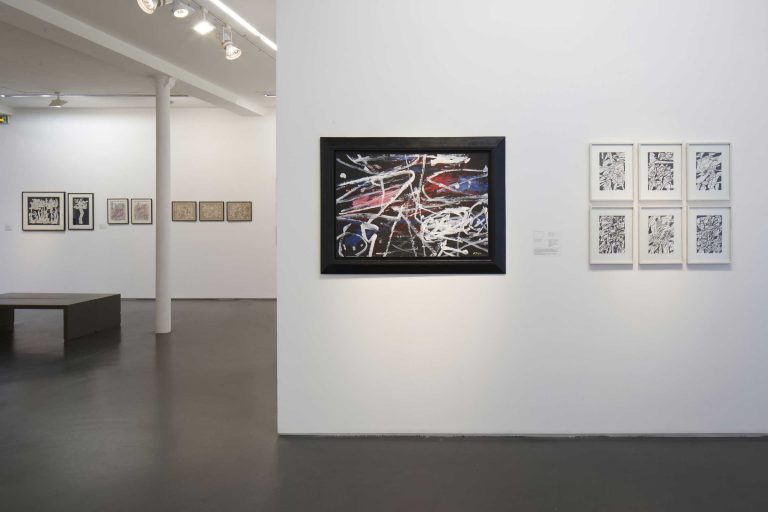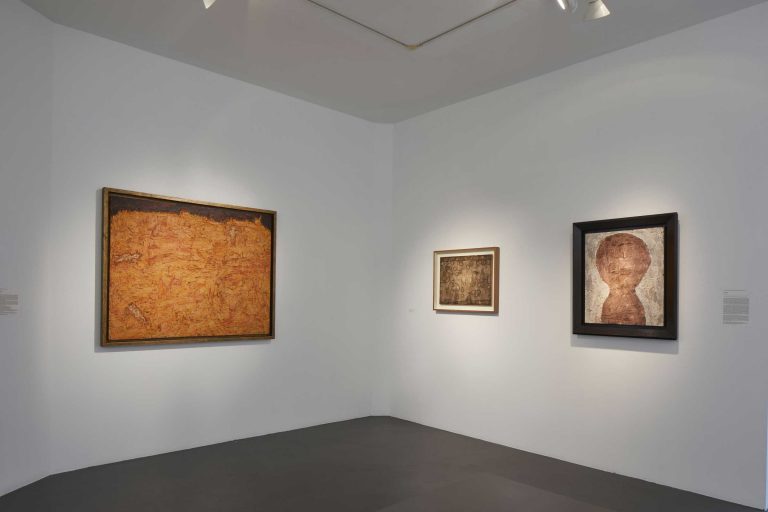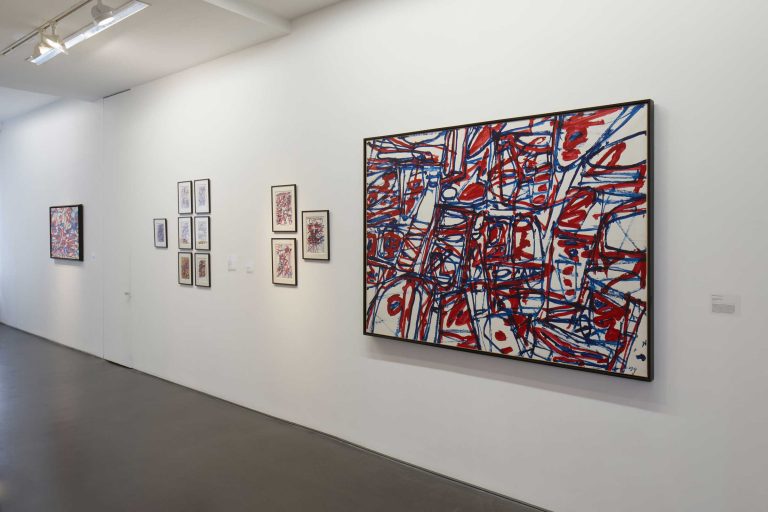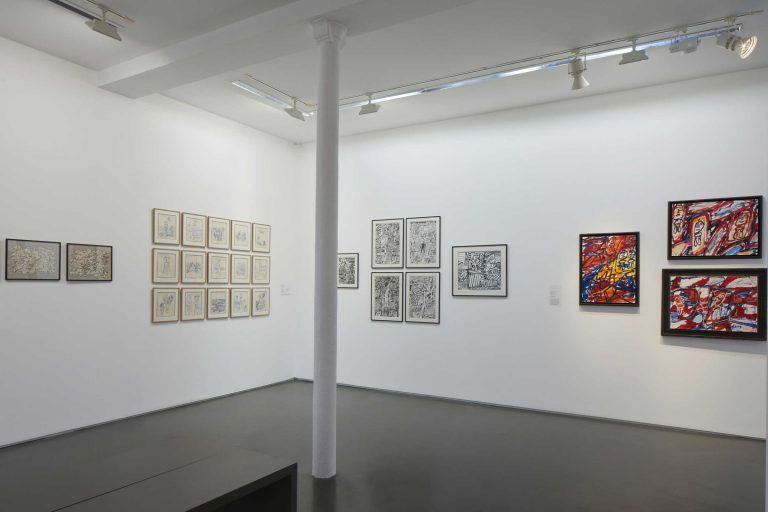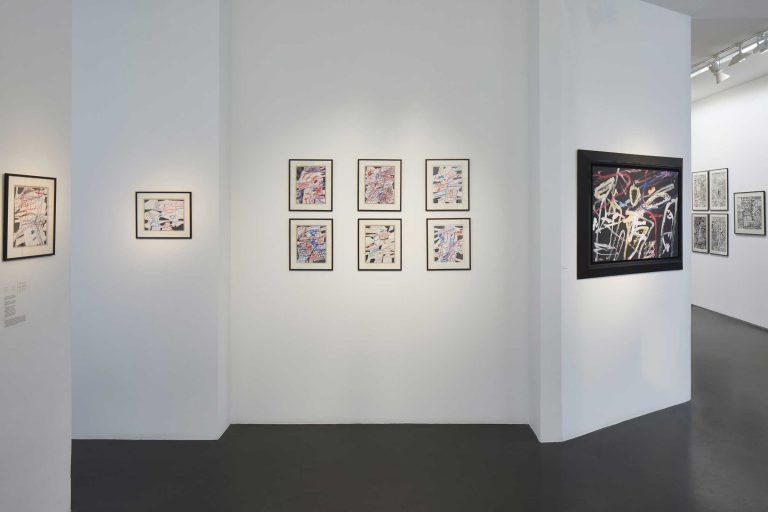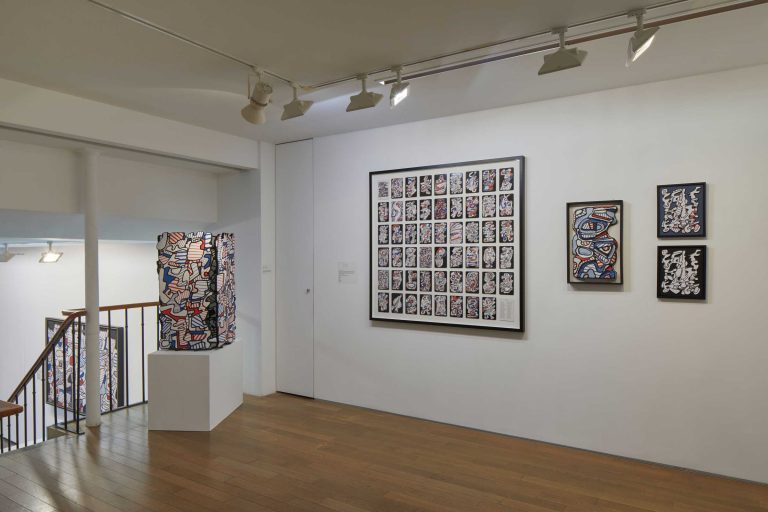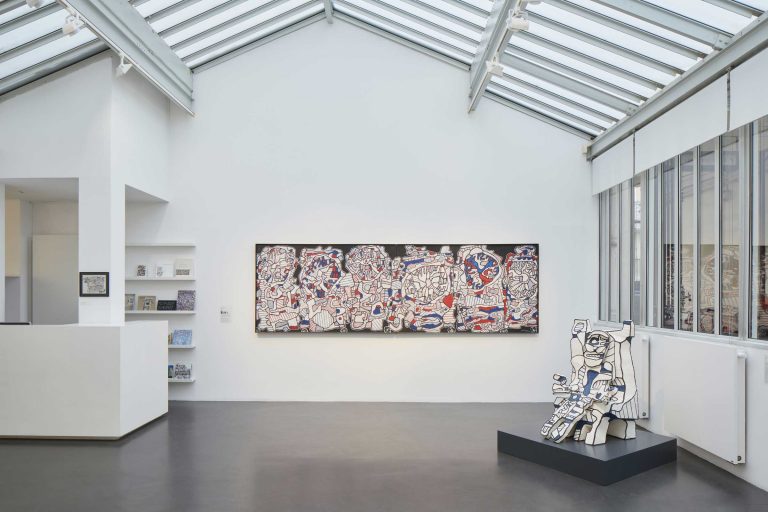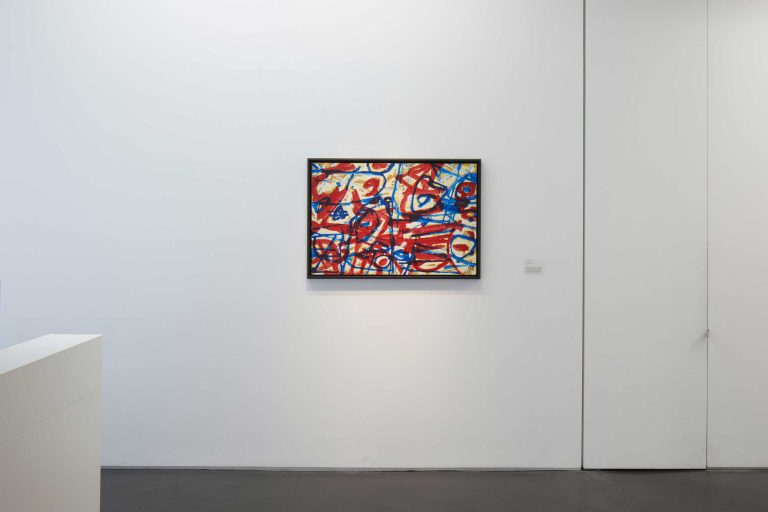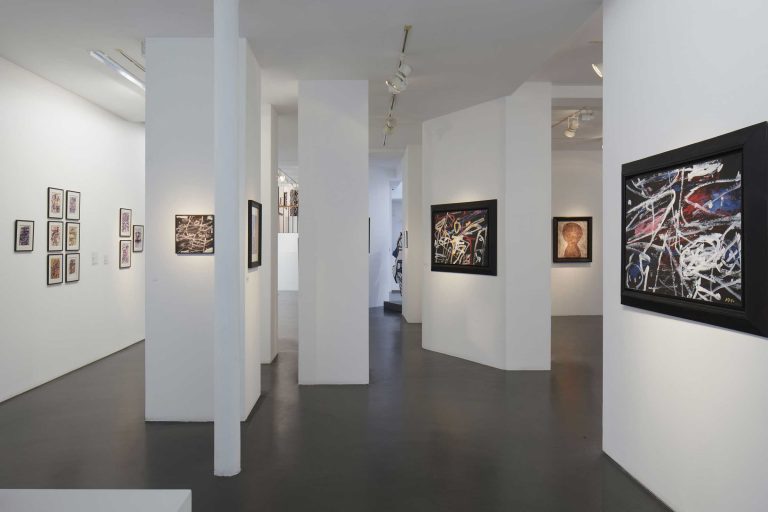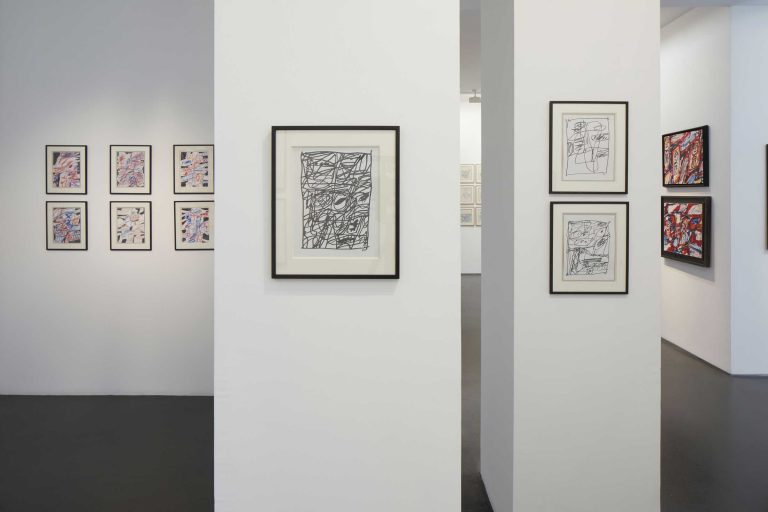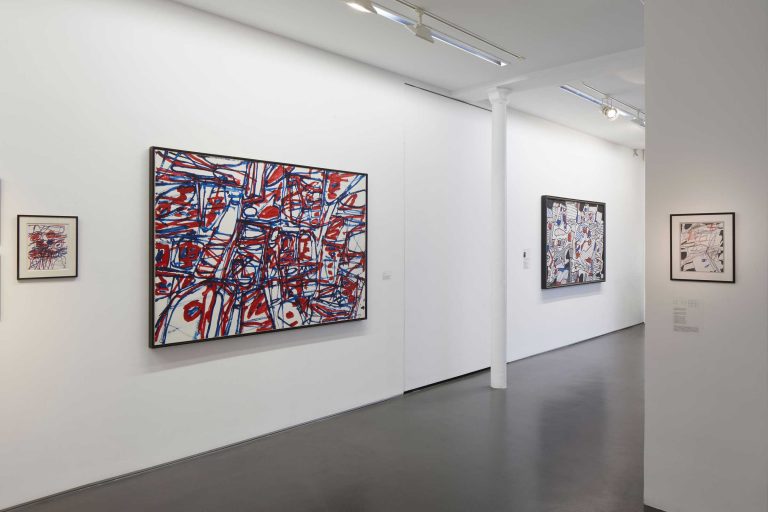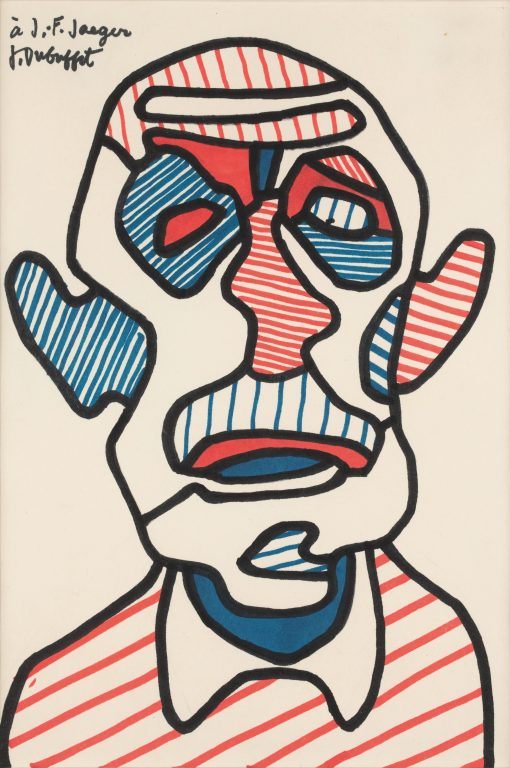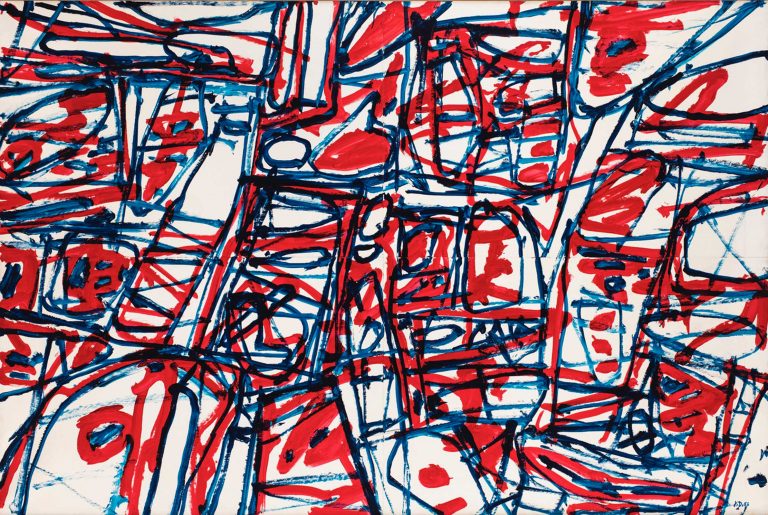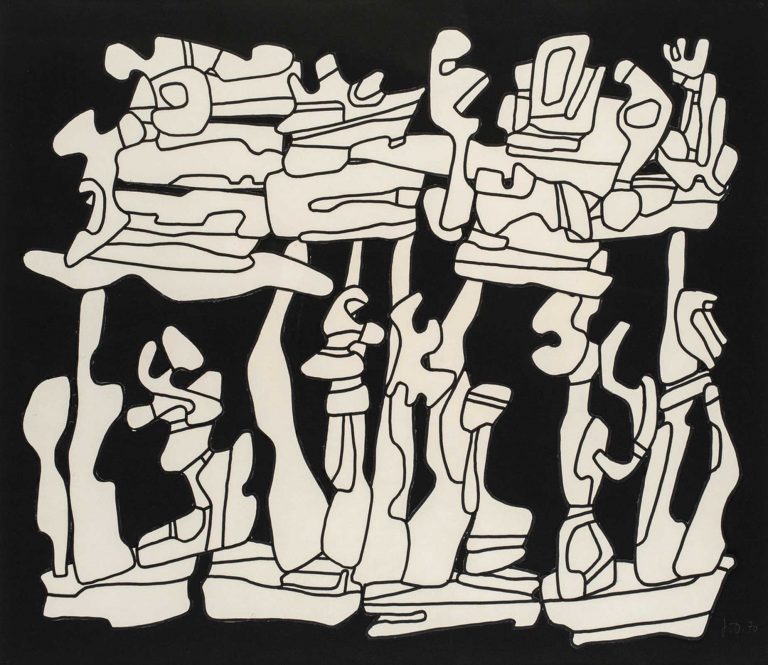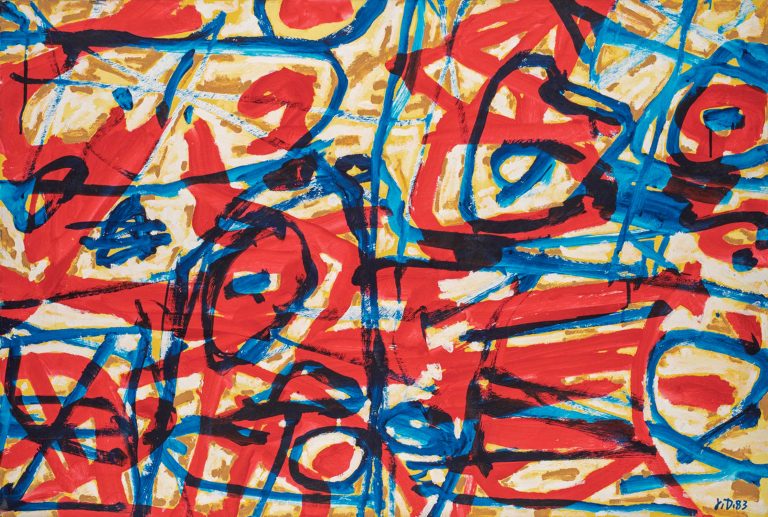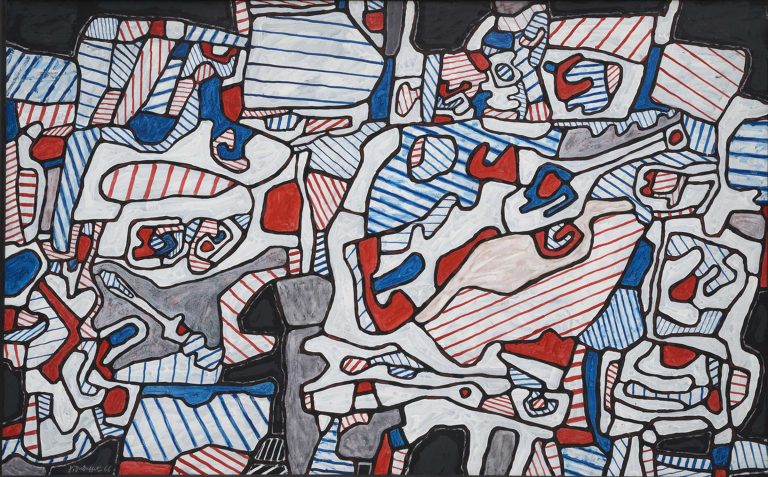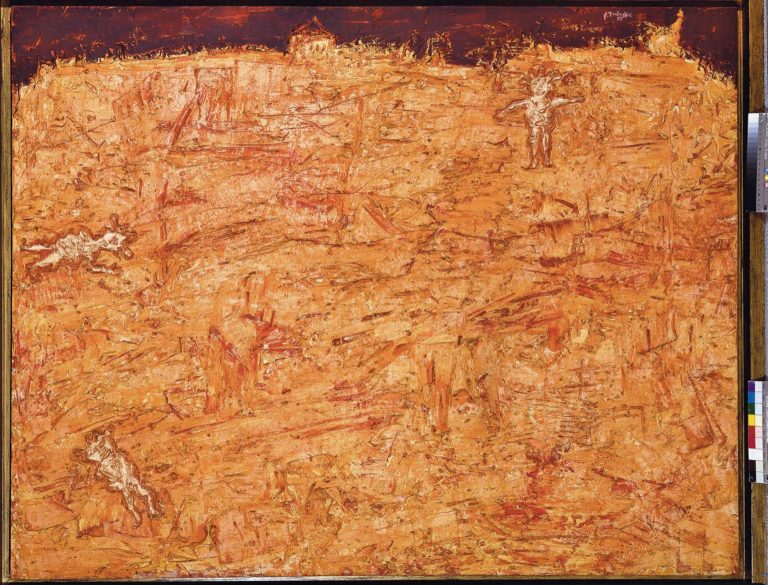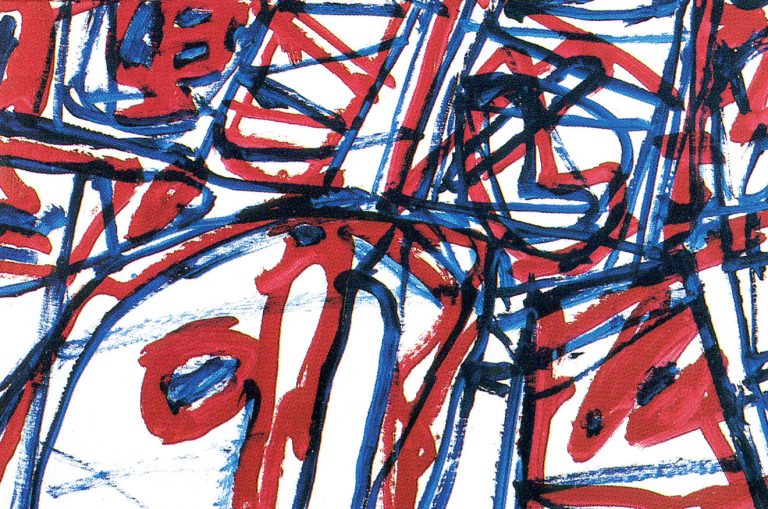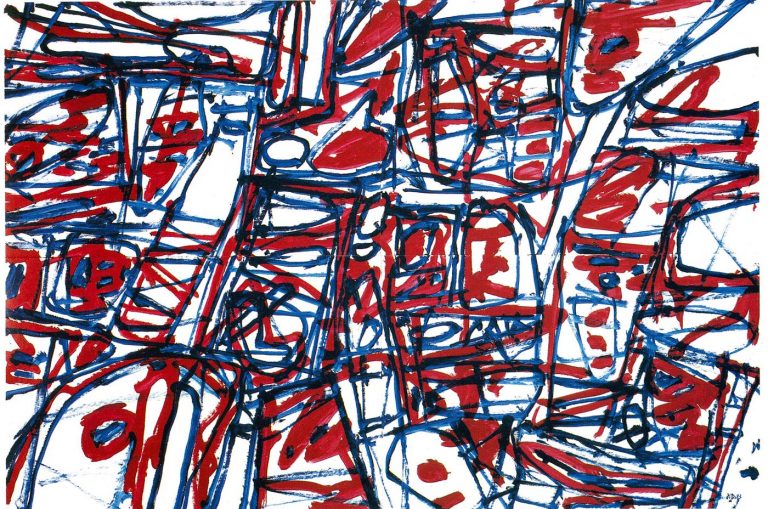Jeanne Bucher Jaeger - Marais space
© Hervé Abbadie, courtesy Jeanne Bucher Jaeger Paris - Lisbonne
Jeanne Bucher Jaeger - Marais space
© Hervé Abbadie, courtesy Jeanne Bucher Jaeger Paris - Lisbonne
Jeanne Bucher Jaeger - Marais space
© Hervé Abbadie, courtesy Jeanne Bucher Jaeger Paris - Lisbonne
Jeanne Bucher Jaeger - Marais space
© Hervé Abbadie, courtesy Jeanne Bucher Jaeger Paris - Lisbonne
Jeanne Bucher Jaeger - Marais space
© Hervé Abbadie, courtesy Jeanne Bucher Jaeger Paris - Lisbonne
Jeanne Bucher Jaeger - Marais space
© Hervé Abbadie, courtesy Jeanne Bucher Jaeger Paris - Lisbonne
Jeanne Bucher Jaeger - Marais space
© Hervé Abbadie, courtesy Jeanne Bucher Jaeger Paris - Lisbonne
© Hervé Abbadie, courtesy Jeanne Bucher Jaeger Paris - Lisbonne
Jeanne Bucher Jaeger - Marais space
Jeanne Bucher Jaeger - Marais space
© Hervé Abbadie, courtesy Jeanne Bucher Jaeger Paris - Lisbonne
© Hervé Abbadie, courtesy Jeanne Bucher Jaeger Paris - Lisbonne
Jeanne Bucher Jaeger - Marais space
© Hervé Abbadie, courtesy Jeanne Bucher Jaeger Paris - Lisbonne
Jeanne Bucher Jaeger - Marais space
© Hervé Abbadie, courtesy Jeanne Bucher Jaeger Paris - Lisbonne
Jeanne Bucher Jaeger - Marais space
Jeanne Bucher Jaeger - Marais space
© Hervé Abbadie, courtesy Jeanne Bucher Jaeger Paris - Lisbonne
© Hervé Abbadie, courtesy Jeanne Bucher Jaeger Paris - Lisbonne
Jeanne Bucher Jaeger - Marais space
Marker on paper
10,2 x 6,9 in
Photograph by Jean-Louis Losi
This exhibition by Jean Dubuffet (1901-1985), originally programmed to open on February 5, 2022, was rescheduled and modified after the death of Dubuffet’s art dealer, Jean-François Jaeger, on December 26, 2021, and dedicated it to his memory. Its title, Le Cours des choses, refers not only to the 8-meter-long work Le Cours des choses-Mire Boléro G174, which Jean-François Jaeger exhibited at the gallery in 1985, and which was acquired that same year by the Centre Pompidou-MNAM, but also symbolizes Jean-François Jaeger’s longstanding dedication to Dubuffet’s work; which he passionately defended for so many years.
Conceived as a “biographie au pas de course” (“speedy biography”) retracing the works by Dubuffet shown at the gallery starting in 1964, the exhibition presents paintings, sculptures and works on paper from various cycles from the 1950s until his death in 1985: the extensive Hourloupe cycle (1962-1974) promoted exclusively at the gallery in collaboration with the Swiss dealer Ernst Beyeler for more than a decade, his Psycho-sites, the series Mires Boléro and Kowloon and his late cycle of Non-lieux, as well as Matériologies from the 1950s (before Dubuffet was represented by the gallery), recently acquired by Véronique Jaeger and exhibited at the gallery.
The exhibition’s starting point is Dubuffet’s Hourloupe cycle, his longest and most monumental series, created over a period of 12 years, with which he began his relationship to the gallery. It starts with small, instinctive drawings executed by the artist in blue and red ballpoint pen while talking on the phone, as seen in a large number of drawings such as La Machine à écrire (1964), made in marker and ballpoint pen, which starts writing the history. These works are followed by Brouettes, Personnages, Arbres, Ciseaux, Escaliers, Logologies and Monuments, which explore the world’s infinite variety via adventurous lines that enable human forms, figures or familiar objects to emerge through highly diverse techniques and materials, including marker, felt-tip pen, vinyl paint, collage and cutouts, that inspired the artist with their almost magical ability to embody distinctive forms. After the works in ballpoint pen on paper, the Hourloupe adventure took shape in paintings and sculptures that become monumental, leading up to such unimaginable architectures as the Closerie Falbala in the Paris outskirts, which houses the Cabinet Logologique, and costumes for the exhibition-performance Coucou Bazar.
Following his Materiologies and his attraction of Art Brut, the virtual cosmogony of Hourloupe was inspired by the incandescent spirit of childrens’ drawings, which nourished the artist’s work. Hourloupe. Loupe. Entourloupe. Le Horla, fantastic and supernatural… Games of the mind and of the moment, divinatory and incantatory spontaneity, energetic lines, the imagination in motion, anti-matter at work, the vitality and virtuality of reality, the Houle du Virtuel… An exuberant and complex universe, a spectacle to be deciphered, like the works themselves, one in which we can see a logos in the process of being written, the movement of a line that draws space by drawing itself, in which the object acquires a life of its own.
From a virtual world to the Non-Lieux, a path that the exhibition also invites us to explore.
This game of displacement is palpable in the immense 4-meter-long painting Train de pendules (1965), acquired from the gallery by the French government in 1965, and loaned exceptionally from the Centre Pompidou in Paris on this occasion. It was shown by Jean-François Jaeger on the occasion of the gallery’s 40th anniversary in 1965; today, 57 years later, this depiction of a series of clocks whose enterprise of producing time occupies space, greets visitors entering the Marais gallery. This “drive” thus generates space over time, amplifying the idea of rapid displacement that is associated with it. A mise en abyme of time transforming space and of space changing with time, this work was chosen here both for its deep resonance with the artist’s work and with the gallery’s activity throughout the years.
While shapes and elements are deeply intertwined in Train de pendules, the painting Site domestique (au fusil espadon) avec tête d’Inca et petit fauteuil à droite, from 1966, frees everyday objects in quasi-weightlessness; they seem detached from the background, as if floating and autonomous.
The only gift Jean Dubuffet gave to Jean-François Jaeger, Autoportrait V, dated December 1, 1966, is the artist’s simple, literal response to the young gallery owner, who said, “I cannot mess around with your head… ” Jean Dubuffet made only 6 self-portraits in his lifetime, and he gave them to a few close friends, including Max Loreau, author of his catalogue raisonné; Asger Jorn and Jean-François Jaeger, his French art dealer.
The second self-portrait in this exhibition, Le Deviseur (1969), created at the end of the Cabinet Logologique’s long journey, exceptionally on loan from the Fondation Dubuffet, is a version of one that Jean-François Jaeger lived with for more than 50 years in black and white. In the midst of philosophical meditation, the artist mumbles about the world and seems to be listening to a supreme metaphysical truth.
The Personnage pour Washington Parade (1973) bears witness to the growing monumentality of the artist’s work, which in the early 1970s led him to leave the gallery and exhibit in the United States, at the time the only country capable of showing and acquiring his gigantic formats. He returned to the gallery in the early 1980s, where he exhibited his series Psychosites, Mires and Non-Lieux, of which the gallery presents some of the emblematic paintings, notably the Mires Bolero and Kowloon, as well as a selection of Non-lieux entitled Donnée, Idéoplasme and Expansion de l’être. At the heart of the exhibition are three works from the 1950s acquired by the gallery at the instigation of Véronique Jaeger, including l’Homme menhir, a monolithic figure spanning the centuries, immortalizes the presence of a father figure omnipresent at the gallery for almost 70 years, as well as the incandescent, fiery Terre orange aux trois hommes.
The works on paper, which are the focus of the exhibition—more than fifty of them—and the drawings in particular, were never considered by Jean Dubuffet to be preliminary sketches. Drawing for him was a place for exploration and creativity in its own right, and enabled the artist to free himself in all the various series: whether in his mental wanderings transcribed in ballpoint pen, as in the drawings of the Hourloupe cycle (1962-1974), or the series Crayonnages (1974), made with simple coloured pencils, or in Récits and Conjonctures (1975), comprising cut-out and/or glued elements; as well as his Sites aux figurines, illustrations for books published by the gallery including Bon piet beau neuille, Mires and his final series, Non-Lieux and Activations, executed with coloured pencils a few weeks before he passed away in 1985. Just before his death, the artist, who throughout his life never ceased to value the importance of “unlearning,” allowed his childlike soul to express itself in the utmost simplicity.
In the mezzanine space, the artist’s multiple editions produced by the gallery are on view: Cerceaux sorcellent and Parade funèbre pour Charles Estienne, the Personnage mi-corps polychrome relief, 52 cards of extrapolatory figures in l’Algèbre de l’Hourloupe et son jeu de l’esprit, silkscreened editions on polyvinyl in Tétrascopique and Arborescences I and II polychrome reliefs, produced by a vacuum press acquired by the gallery, as well as the gallery’s publication of his jargon texts, Bon piet beau neuille, marking the artist’s return to the gallery in the early 1980s.
Jean Dubuffet’s first contacts with the Jeanne Bucher Gallery date back to 90 years ago, in 1931.
Visiting the Marcoussis exhibition on the rue du Cherche-Midi, the young Dubuffet, who had just turned thirty, was looking for a gallery to represent his work. He signed the visitors’ book with a prophetic sentence: We will surely end up meeting each other somewhere, one day or another. While she recognized his talent, Jeanne Bucher never exhibited the Le Havre-born artist.
Thirty years later, when Dubuffet’s dealer Daniel Cordier, closed his Paris gallery, the artist’s words would finally take on their full significance.
Jean Planque, whom Ernst Beyeler had asked to scout out new artists and masterpieces for his gallery in Basel, convinced Dubuffet—by then well established—to let the Jeanne Bucher Gallery represent his work in Paris in partnership with the Beyeler gallery in Switzerland.
Following the rather controversial exhibition of Dubuffet’s Hourloupe cycle at the Palazzo Grassi in Venice in the summer of 1964, the first show of the artist’s work was held at the gallery on December 8, 1964, where it was celebrated without an opening.
Jean-François Jaeger, director of the gallery, recently moved to the rue de Seine, remembered carefully preparing his first meeting with Jean Dubuffet in order to prove himself worthy of the artist’s trust. After his first few words, Jean Dubuffet interrupted him, saying, There’s no point in trying to explain to me what I’m trying to do at present. I don’t actually know what it means myself.
Thus in 1964 began a long and passionate collaboration that would result in twenty monographic exhibitions at the gallery as well as numerous collaborations with international institutions, initiated by Jean-François Jaeger, who tirelessly promoted Dubuffet’s work for more than 40 years. He was joined from 2003 to 2010 by Frédéric Jaeger, current President of the Friends of the Dubuffet Foundation, and by Véronique Jaeger, who in 2004 took over the general management of the gallery and is currently its President, joined by her brother Emmanuel Jaeger, Director since 2015.
The gallery’s long history with the artist is full of interesting anecdotes, with just a few by Jean-François Jaeger recounted here:
For the exhibition Fiston la Filoche, Peintures Monumentées de 1968-1969, the gallery owner had the challenge and pleasure of imagining a hanging that would surprise the artist. We were on the lookout for his arrival, Jean-François Jaeger recalled. As soon as the door opened, Dubuffet stood there, stunned and amazed. He walked around the room, and finally uttered a word of satisfaction, which was worth all the certificates of approval in the world.
After the exhibition of the Cycle de l’Hourloupe at the gallery in late 1971, Jean-François Jaeger was invited in 1973 by the L’Herne publishing house to write a text on the artist. The result would become a landmark for its daring and inventiveness.
In response to Dubuffet’s explosive and limitless creativity, the gallery continued to take up new challenges, including, in the late 1960s, the establishment of the company Vacuart in Ivry-sur-Seine, which was imagined by Dubuffet’s friend, the artist Gérard Singer, in collaboration with a specialist from the Institut National Géographique. The company’s innovative technology and its introduction of the vacuum forming press led to the production of many exceptional silkscreened editions by Dubuffet, including Personnage mi-corps.
I don’t own, I belong to – This was Jean-François Jaeger leitmotif, and it was embodied in the way he practiced his profession as a gallery owner, as a profession of faith. For more than 66 years, with a rare sense of commitment, humility and integrity, he maintained the dedication to excellence instilled in him by Jeanne Bucher while following the creative development of outstanding artists and passionately defending their work. The list of his activities is as long as it is rich, both in the gallery and in international museums where he worked tirelessly to support the artists who were the gallery’s mainstays and on whom his expertise was legendary: Maria Helena Vieira da Silva and Arpad Szenes, Nicolas de Staël, Hans Reichel, Bissière, Mark Tobey, Jean Dubuffet, Asger Jorn…
I reproduce here his words on the Deviseur, published in a 1991 catalogue entitled Dans la perspective du Deviseur:
Sitting on the tip of his buttocks on a vast seat whose heavy layout symbolizes the importance of the natural environment as a point of attachment or as a springboard, a small arched body seems projected not into space but into its own interiority. The feet barely touch the ground; (…) Only a powerful breath seems capable of giving the torso the strength to carry an imperious head concentrated on itself and its reflection: the gaze, the hearing, the breathing turned inwards, in a total inner listening. This introversion is opposed by the opening of gigantic hands whose gesture could be that of a donor. (…) One morning in May 1985, I had the moving privilege of carrying the already frozen body of this great spirit. I cannot think without emotion of this final meeting in the austere room he occupied in the Maintenon alley: it was indeed the Deviseur without weight, without thickness, without voice and without a gaze, in the eternity of a dominated consciousness.
Jean-François Jaeger’s words on this sculpted self-portrait of Jean Dubuffet, whom he accompanied for so many years, now resonate with their full density.
Jean Dubuffet solo shows at the Gallery
• L’Hourloupe – December 8, 1964, to late January 1965
• Nunc Stans, Epokhé (Cycle de l’Hourloupe) – April 7 to April 30, 1966
• Ustensiles, demeures, escaliers (Cycle de l’Hourloupe) – June and July 1967
• Fiston la Filoche, Peintures Monumentées (Cycle de l’Hourloupe) – December 12, 1968, to February 8, 1969
• Cycle de l’Hourloupe – October 13 to November 13, 1971
• Psycho-sites – November 9 to December 20, 1982
• Le Cours des choses – FIAC 1984
• Mires – October to December 1984
• Œuvres de 1953 à 1984, appartenant à la Fondation Jean Dubuffet – May 12 to May 30, 1986
• Non-lieux 17 peintures et 11 dessins – September 30 to November 7, 1987
• Paysages du mental – May 31 to July 20, 1989
• Dans la perspective du Deviseur : Psycho-sites, Mires, Non-Lieux – May 31 to July 12, 1991
• L’Hourloupe ou la Foire aux mirages : dessins, peintures et sculptures – ArtParis 2006, then at the gallery, March 23 to April 29, 2006
• Plaidoyer pour un Non-lieu – FIAC 2007
• Cent dessins de Jean Dubuffet, de 1964 à 1985 – March 19 to April 30, 2009
• Attractions terrestres, de 1943-1960 – October 15 to November 28, 2009
• Matière et Mémoire, la Demeure du Patriarche, Jean Dubuffet – November 19, 2013, to January 25, 2014
• Le Cours des choses – September 10 to December 17, 2022
Acrylic on paper mounted on canvas
52,7 x 78,7 inches
© D.R.
Marker (black) on paper (cut and pasted on black paper)
19,7 x 22,4 inches
© Jean-Louis Losi
Acrylic on paper mounted on canvas
26,4 x 39,4 inches
© Jean-Louis Losi
Vinyl on canvas
49,2 x 78,7 cm
© Jean-Louis Losi
Oil on isorel
44,9 x 57,5 inches
© Jean-Louis Losi
Acrylic on paper mounted on canvas
52,7 x 78,7 inches
© D.R.
Marker (black) on paper (cut and pasted on black paper)
19,7 x 22,4 inches
© Jean-Louis Losi
Acrylic on paper mounted on canvas
26,4 x 39,4 inches
© Jean-Louis Losi
Vinyl on canvas
49,2 x 78,7 cm
© Jean-Louis Losi
Oil on isorel
44,9 x 57,5 inches
© Jean-Louis Losi
practical informations
Marais Space
5 rue de Saintonge
75 003 Paris – France
T +33 1 42 72 60 42
F +33 1 42 72 60 49
info@jeannebucherjaeger.com
opening hours
Tuesday to Friday
from 10 am to 7 pm
On Saturday from 11 am to 7 pm
